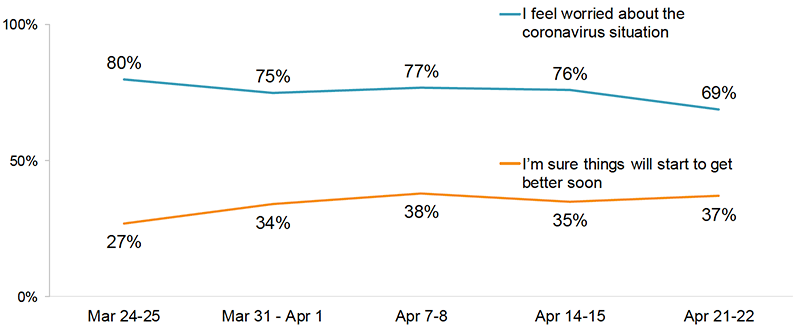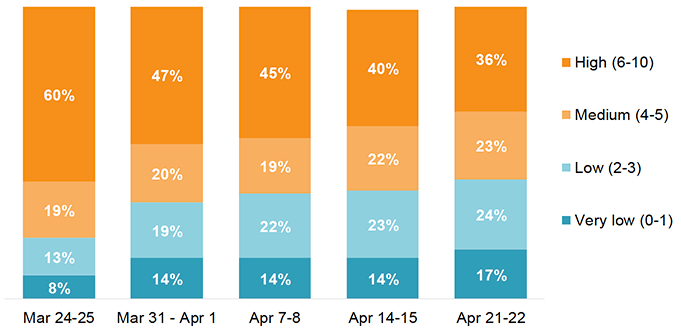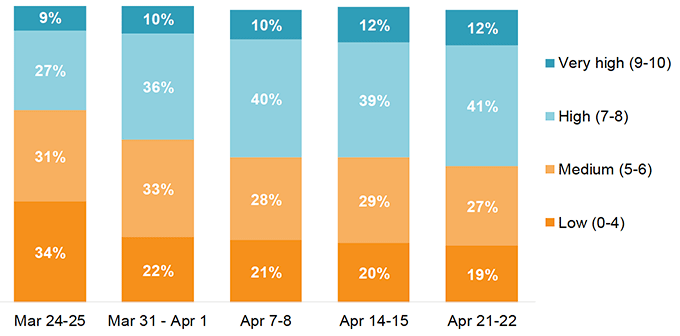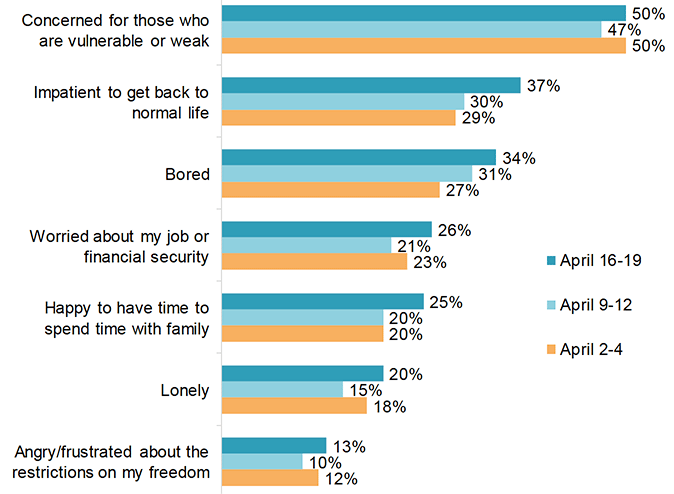Public attitudes to coronavirus: April summary
High level findings from recent polling work on public attitudes to the coronavirus (COVID-19) pandemic in Scotland.
Wellbeing
Worry and optimism
To understand worry and optimism in relation to Coronavirus, respondents were asked to what extent they agreed or disagreed with the statements shown in
Figure 7.
The vast majority agreed or strongly agreed that they feel worried about the Coronavirus situation. There has, however, been a decline in the proportion feeling worried, compared with the end of March. This decline has been driven by a fall in those who strongly agreed with this statement (43% on March 24-25 compared with 25% on April 21-22). Similarly, the proportion who agreed with the statement that things will get better soon was higher in the most recent wave compared with the first wave.

Source: YouGov weekly Scotland survey. Base (n=912-1042)
Levels of anxiety and happiness
The YouGov survey included two of the Office of National Statistics' (ONS) wellbeing questions[2] to measure levels of anxiety and happiness. Respondents were asked how anxious and how happy they felt 'yesterday', on a scale of 0 to 10.
As shown in Figure 8 overleaf, anxiety levels were very high towards the start of the lockdown period, but appear to have decreased throughout April.

Source: YouGov weekly Scotland survey. Base (n=912-1042)
Similarly, respondents were most likely to be unhappy (rating of 0-4) and least likely to be happy (rating of 7-8) at the end of March. Unhappiness levels fell at the start of April and remained stable throughout the remainder of the month; happiness increased in early April and has also stayed stable since then.

Source: YouGov weekly Scotland survey. Base (n=912-1042)
General feelings
To gauge feelings about Coronavirus, respondents were shown a list of options and asked which best applied to them. Respondents were able to choose more than one option. As shown in Figure 10, the most common feeling, consistent over the three waves included, was 'concern for those who are vulnerable and weak'.
In the most recent wave, an increase is seen in the proportion who felt 'impatient to get back to normal life', as well as small increases in the proportions who felt 'worried about their job or financial security', 'happy to have time to spend with family', and 'lonely'.

Source: Ipsos MORI, Scotland data. Scottish base (n=652-665)
Contact
Email: covid-19.behaviours@gov.scot
There is a problem
Thanks for your feedback